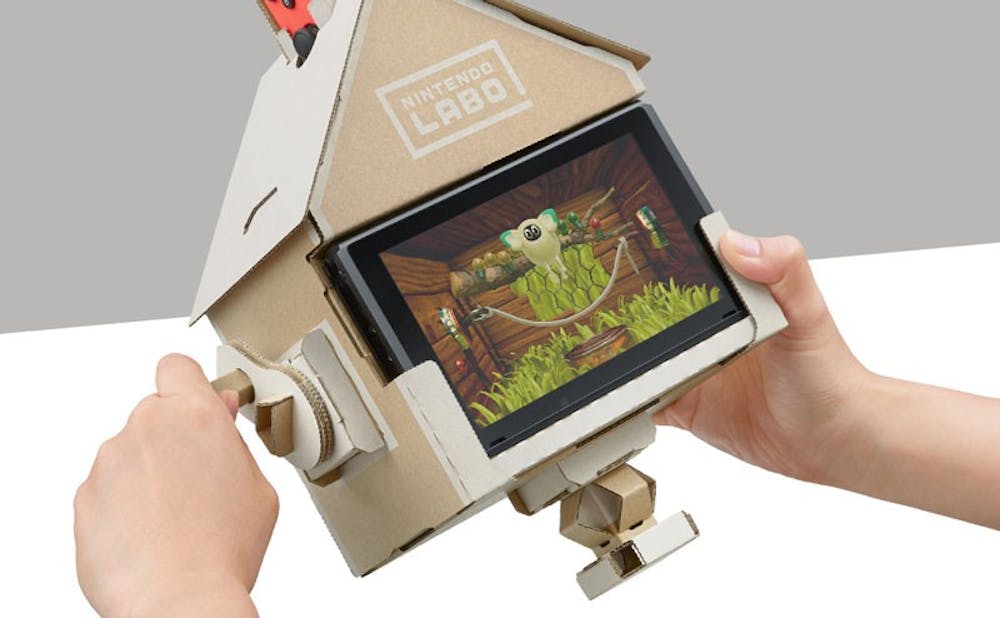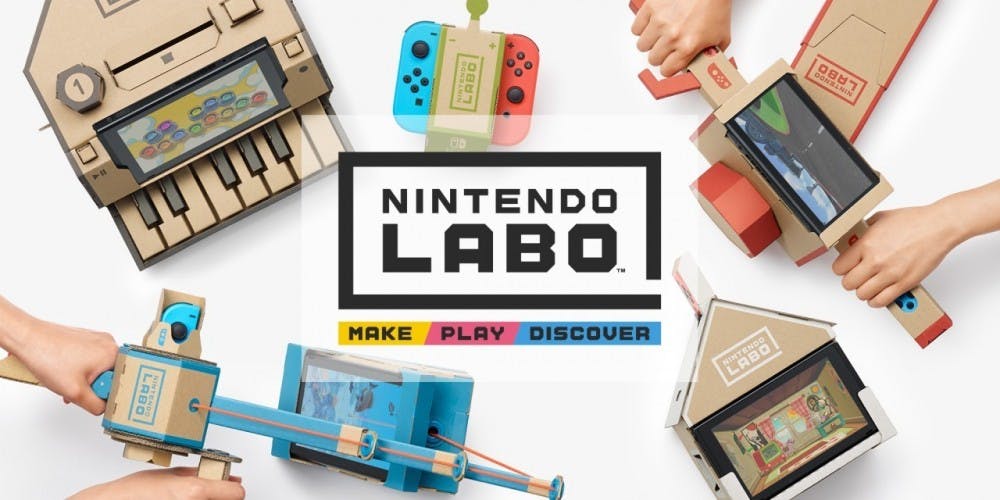When considering video games, the last thing comes to mind is cardboard. Usually in the gaming industry, there are constantly weird gimmicks enticing people to buy products. This is typically an advancement in technology, but Nintendo follows their own path. The company decided to go back in time by introducing the revolutionary Nintendo Labo.

Image from EB Games
The Labo is a set of cardboard kits that contains a physical game and sheets of cardboard for the players to make creative toys. There are two kits: the variety kit (which was used for this review) priced at $70 and the robot kit priced at $80. Both of these prices are quite hefty, especially since each costs more than a brand new game.
In the variety kit, five total projects are packaged with the game. These include the RC car, fishing pole, piano, house, and motorcycle. The other kit only includes the robot outfit. This is rather odd because the variety kit contains more to do yet costs less than the other kit.
The first major concern with the game was that the cardboard would fall apart during the setup of each piece. Despite this anxiety, each piece of cardboard actually felt pretty high quality. However, this was only the the initial impression of the material.
In order to make the projects, players must essentially punch out the cardboard from the sheets in the box and fold along specific lines on the backside of the material. Nintendo also added to confusion that players had to fold certain lines in specific directions at specific times during the setup. Luckily, the game makes up for this confusion with the technical side of the product.
The Switch still plays a major role throughout the entire game, including building each project. For the tutorials, the Switch acts as an interactive step-by-step guide. This is extremely helpful for players to look closely at how folds should go and it also prevents people from losing the instructions.

Image from Stuff.tv
Evan Fischer, Byte reviewer, gives his impressions, “My experience with the Nintendo Labo may have been limited to the piano set, but the overall sense of building and playing came through. The idea of creating one’s toys to play with them has been hugely successful with toys such as Lego and Transformers, but unlike these toys Labo falls flat in a few places. The first issue is the amount of time it takes to build, the piano set alone took nearly three hours to complete with three people working on it at the same time which is long enough to make the excitement of building it wear off. Another nitpick is the lack of real creativity going into it. To create the project, the instructions must be followed exactly.”
Even though each toy does feel like putting Ikea furniture together, they feel pretty sturdy. There are multiple cardboard locks in place to prevent the overall structures from just sliding around. It felt like Nintendo spent a long time looking at the cardboard and putting thought into each toy.
Regarding the actual gameplay of Labo, I was actually surprised. While the game might look like it has incredibly simple mini games for each project, they are deeper than expected. For example, the RC car looked the most basic, but it allowed the user to use the right joy-con as an infrared camera.
Overall, the piano had the most depth and gameplay for players to experiment with. The game mentions these “secret knobs” that change the overall sound of all the keys to weird noises, such as cat sounds. Also, players could record their own music on the piano.

Image from Polygon
Nintendo did an excellent job at creating a great baseline of cardboard sets for the players to create unique experiences with. To top it off, Nintendo included a programming mode that allows users to create their own custom cardboard creations. While I have yet to master this mode, I could see the endless hours people could spend creating new Labo toys.
The last mode of the game is a discovery mode. This essentially teaches the player how each one of the cardboard sets work, based off of the technology in the joy-cons. While this may not be really helpful for experienced users, this could primarily teach children about technology.
Phil Akin, Byte reviewer, gave his impressions of the Labo, “Sure, Nintendo pitched it as a concept for ‘kids and kids at heart’ but the variety pack itself costs $70, and the robot kit costs a separate $80. I don’t know many kids with the money to buy it themselves. And the price tag is enough to make parents hesitant on it. Not to mention it’s highly unlikely that anyone below the age of ten can put together the kits on their own. It seems to be geared towards families, and not really kids, at least in the cardboard aspect. In the end though, Labo is still fun.”

Featured image from iMore
For more entertainment related content, visit us at Bytebsu!




















